Limited Time Offer!
For Less Than the Cost of a Starbucks Coffee, Access All DevOpsSchool Videos on YouTube Unlimitedly.
Master DevOps, SRE, DevSecOps Skills!
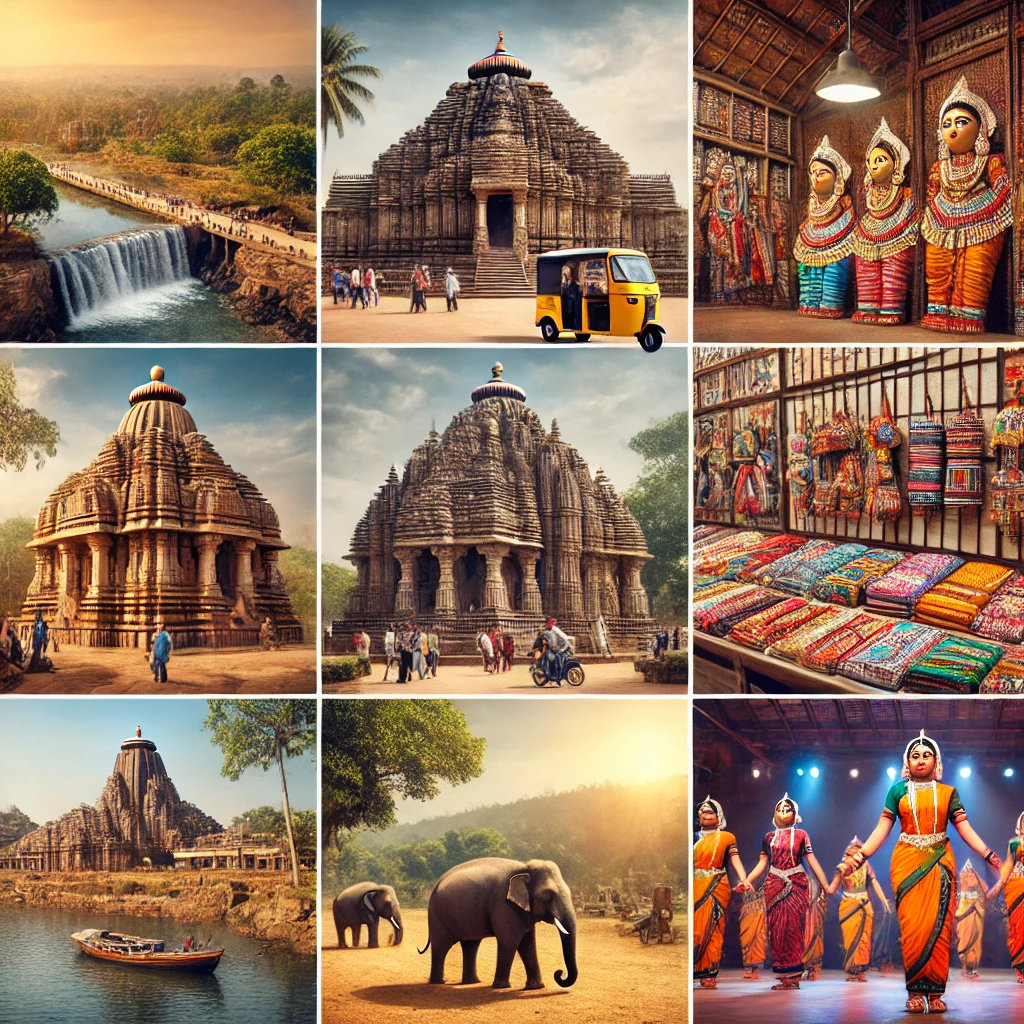
Introduction to Bhubaneswar
Overview of the City
Bhubaneswar, the capital of Odisha, is an ancient city with a rich history that blends over 2000 years of heritage with modern urban planning. Known as the “Temple City of India,” it boasts a remarkable architectural legacy of stunning historic temples. The city’s geography is characterized by flat or slightly undulating terrain, part of the Eastern Ghats, making it scenic and favorable for exploring. Its culture is a vibrant tapestry of classical dance forms like Odissi, intricate handicrafts, and Odia festivals that illuminate its streets and homes throughout the year.
Significance as a Tourist Destination
Bhubaneswar is a significant tourist destination due to its historical importance and its role as a hub for exploring nearby attractions like the beaches of Puri and the sun temple of Konark. As a center of Buddhist and Hindu history, it offers numerous temples, monuments, and archaeological sites. The city’s masterful stone sculptures and ancient ruins speak volumes of its past. Moreover, Bhubaneswar serves as a gateway to Odisha’s tribal culture and landscapes, appealing to both spiritual seekers and those interested in the natural and anthropological heritage of the region.
Best Times to Visit
The best time to visit Bhubaneswar is from October to March, during the cooler months of the year. The weather during this period is pleasant, with temperatures ranging from 15°C to 30°C, ideal for temple visits and city tours. This time also coincides with several major festivals, including Durga Puja and Konark Dance Festival, offering tourists a glimpse into the rich cultural fabric of the city. The monsoon season from June to September is less ideal due to heavy rainfall, which can affect travel plans and outdoor activities.
Getting to Bhubaneswar
| Mode of Transport | Details |
|---|---|
| By Air | Bhubaneswar is served by the Biju Patnaik International Airport, which is well connected to major cities in India like Delhi, Mumbai, Kolkata, and Bangalore, as well as international flights. The airport is about 6 km from the city center. Taxis, auto-rickshaws, and rental cars are available at the airport for easy access to the city. |
| By Train | The city’s main railway station is Bhubaneswar Railway Station, centrally located and well connected by rail to all major cities in India. Trains regularly run from major hubs such as New Delhi, Chennai, Mumbai, and Kolkata. The station is equipped with amenities and is accessible by auto-rickshaws, city buses, and taxis. |
| By Road | Bhubaneswar is connected by a network of national highways making it easily accessible by road. The NH 16, which runs through the city, connects it to Kolkata in the northeast and Chennai to the south. Buses from other states and major cities stop at the Bhubaneswar Bus Terminal, located in the heart of the city. |
Local Transport Options in Bhubaneswar
| Mode of Transport | Details |
|---|---|
| City Buses | A wide network of public buses operated by DTS (Dream Team Sahara) serves the city and its suburbs. Buses are frequent, economical, and connect major attractions, markets, and residential areas. |
| Auto-Rickshaws | Auto-rickshaws are available throughout the city and can be hailed directly from the streets. They are ideal for short trips and navigating through narrow lanes. Negotiating the fare in advance is recommended. |
| Taxis | Taxis can either be booked via phone, online apps, or hired from taxi stands. They offer a more comfortable travel option for longer distances within and outside the city. |
| Car Rentals | Several car rental agencies offer services for self-driven or chauffeur-driven cars, perfect for flexible schedules and exploring at one’s own pace. This can be an excellent option for visiting nearby attractions like Puri and Konark. |
Accommodation in Bhubaneswar
| Category | Accommodation Type | Recommendations | Details |
|---|---|---|---|
| Luxury Hotels | Hotels | Mayfair Lagoon, Trident Bhubaneswar | Offers luxurious amenities, lush gardens, spa facilities, and fine dining. |
| Mid-Range Hotels | Hotels | The Crown Bhubaneswar, Hotel Swosti Grand | Well-equipped rooms, central location, suitable for business and leisure. |
| Budget Hotels | Hotels | Hotel Pushpak, Ginger Bhubaneswar | Affordable with basic amenities, close to shopping and tourist sites. |
| Hostels | Hostels | Red Door Hostel, Bhubaneswar Backpackers | Budget-friendly, dormitory-style rooms, common areas for socializing. |
| Guest Houses | Guest Houses | Patra Guest House, Annapurna Guest House | Homely environment, budget-friendly, basic amenities. |
| Unique Lodging | Eco-Resorts & Heritage Stays | Deras Eco Resort, Heritage Inn | Eco-friendly accommodations or traditional settings with cultural experiences. |
Must-Visit Attractions in Bhubaneswar
Top Tourist Spots
Lingaraj Temple: This revered temple dedicated to Lord Shiva is one of the oldest in Bhubaneswar, showcasing splendid Kalinga architecture. Non-Hindus are not allowed inside, but a viewing platform outside offers a good vantage point. Visit early morning or late evening to avoid crowds and experience the serene atmosphere.
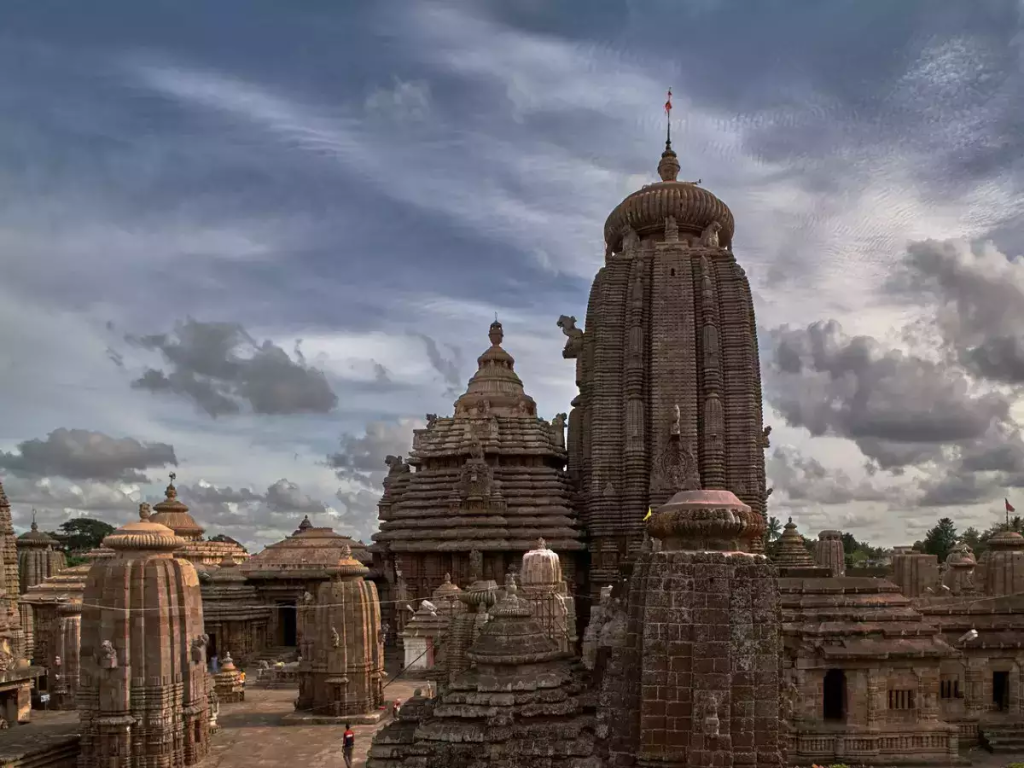
Udayagiri and Khandagiri Caves: These ancient, rock-cut caves are adorned with beautiful carvings and hold great historical and religious significance. They are best visited from October to March, ideally in the morning to avoid the heat of the day. There is a small entry fee, and you might need to pay extra if you want to take photographs.
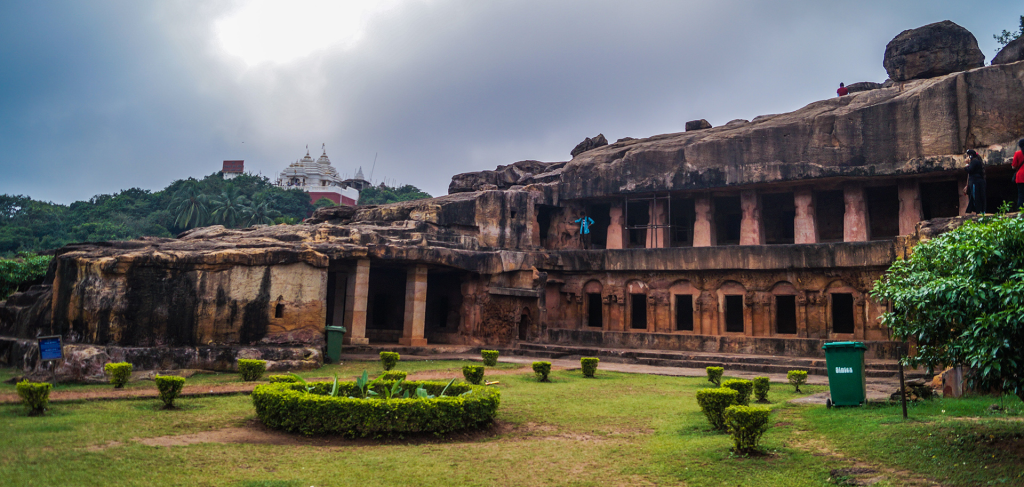
Rajarani Temple: Known for its outstanding architectural beauty and intricate carvings, this temple attracts visitors of all faiths as it’s no longer an active place of worship. The best visiting times are during the cooler months from October to March, and either early morning or late afternoon when the light is perfect for photography. A nominal entry fee is charged.
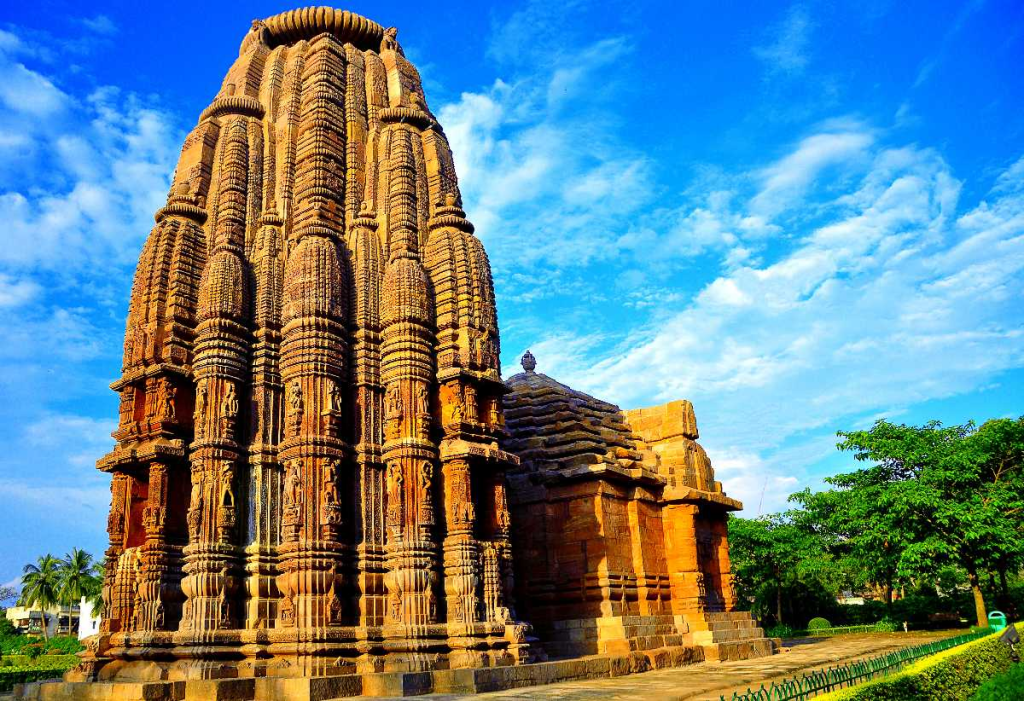
Lesser-Known Sites
Mukteshvara Temple: Often referred to as the “Gem of Odisha architecture”, this temple features some of the most elaborate carvings on its archways and structures. The best time to visit is from October to March during the early mornings or late afternoons.

State Museum: Dive into the rich cultural, historical, and artistic heritage of Odisha at this museum. It’s open year-round, making it a perfect stop regardless of the season. There is a small fee for entry, which is waived on certain public holidays.
Dhauli Hill: Famous for its peace pagoda and ancient rock edicts by Emperor Ashoka, this hill offers panoramic views and a tranquil setting. Visit during the cooler months of October to March and enjoy this site without any entry fee.

Pathani Samanta Planetarium: Ideal for families and those interested in astronomy, this planetarium offers educational shows about the universe. It operates year-round with several shows throughout the day, and tickets are available for purchase at different rates.
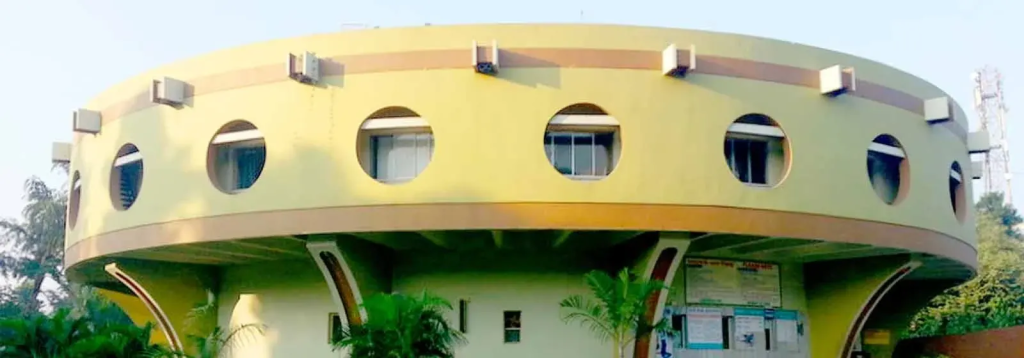
Ekamra Kanan Botanical Gardens: This sprawling garden is ideal for leisurely strolls and picnics, featuring a cactus house, orchid house, and a lake. The gardens are open all year round, with a nominal entry fee.

Tips for Visiting
- Most temples and religious sites are best visited early in the morning or late in the evening to avoid crowds and experience the most pleasant temperatures.
- Always check if there are specific entry requirements, especially for non-Hindus at religious sites.
- For museums and indoor attractions, any time of year is good, but knowing the public holidays can save you an entry fee.
- Carrying water and wearing comfortable shoes is advisable as many attractions involve walking or are spread over large areas.
This comprehensive guide should help you plan your visits to Bhubaneswar’s most cherished and intriguing attractions, ensuring a memorable experience.
Cultural and Historical Insights into Bhubaneswar
Bhubaneswar, the capital of Odisha, is steeped in history and culture, offering a unique blend of ancient heritage and modern urban life. Known as the “Temple City,” it is a center for Hindu and Buddhist culture, with numerous temples dotting its landscape.
Rich History and Cultural Heritage
Bhubaneswar’s history stretches back over 2,000 years when it was known as the ancient capital of Kalinga. This historical depth is visible in its impressive temples built between the 8th and 12th centuries during the Kalinga architectural period. These structures reflect the artistic excellence and spiritual significance of the era. The city was also a significant center during the Mauryan rule, under which King Ashoka fought the bloody Kalinga War before embracing Buddhism.
Museums and Art Galleries
- Odisha State Museum: This museum houses a vast collection of archaeological artifacts, weapons, local arts and crafts, and insights into Odisha’s tribal culture. Its palm leaf manuscripts and traditional musical instruments section are particularly fascinating.
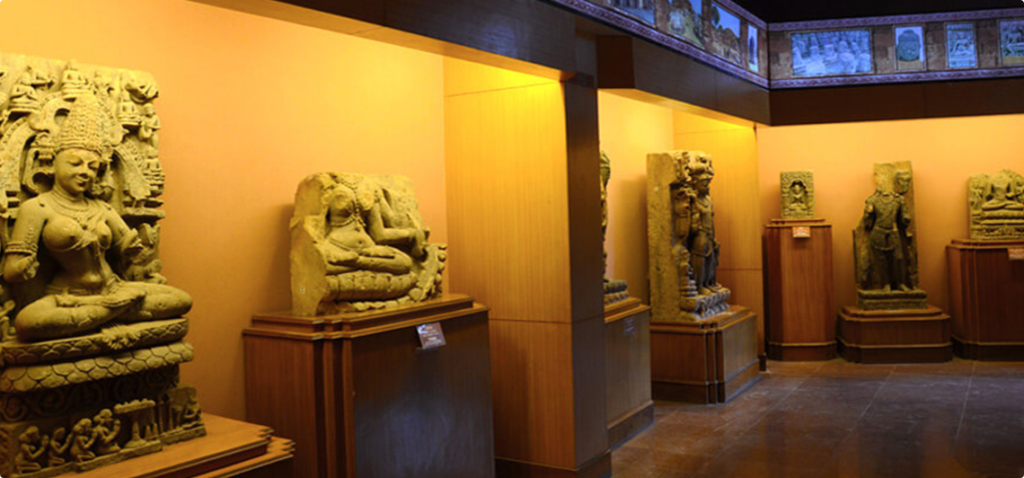
- Museum of Tribal Arts and Artifacts: Displaying a wide array of tribal dresses, weapons, jewelry, and tools, this museum offers an in-depth look into the lives of Odisha’s tribal communities.
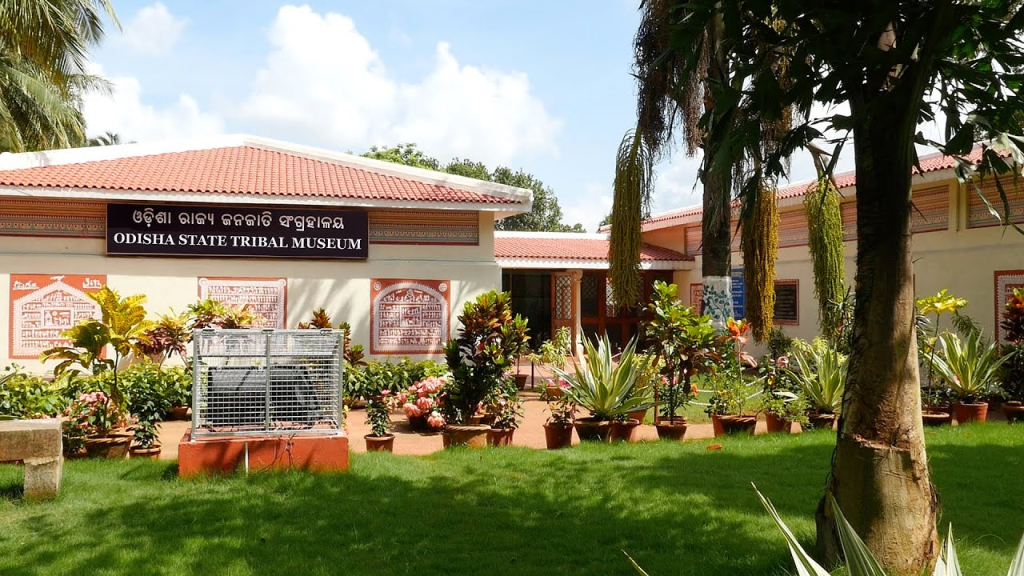
- Kala Bhoomi – Odisha Crafts Museum: Situated on the outskirts of the city, Kala Bhoomi showcases traditional handicrafts and handlooms, promoting the rich craft heritage of the region.
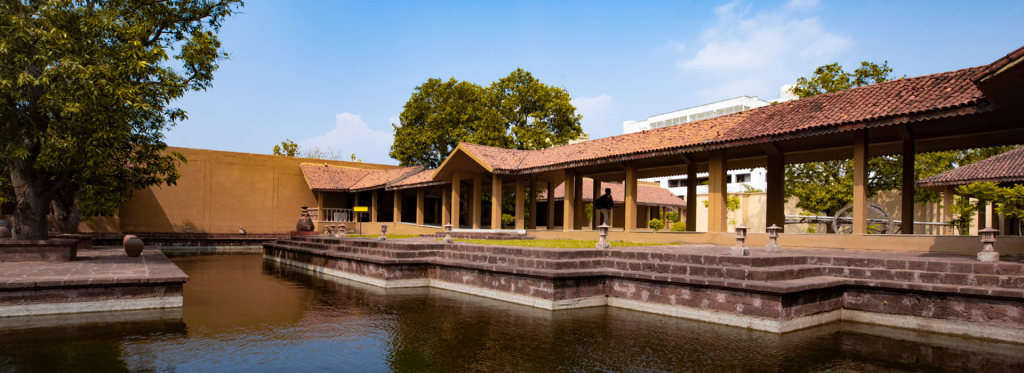
Cultural Centers
- Rabindra Mandap: A hub for cultural events and performances, including dance, drama, and music that showcase the city’s vibrant arts scene.
- Ekamra Haat: Not just a shopping destination but a cultural zone where artisans display and sell their crafts. Regular cultural events and food festivals make it a lively place for visitors to immerse themselves in local culture.
UNESCO World Heritage Sites
While Bhubaneswar itself does not have any UNESCO World Heritage Sites, it serves as a gateway to several nearby attractions that do:
- Konark Sun Temple: Located about 35 kilometers from Bhubaneswar, this 13th-century temple is renowned for its magnificent architecture and intricate carvings depicting the chariot of the sun god Surya. It is a UNESCO World Heritage Site and represents the pinnacle of Odisha’s temple architecture.
- The Buddhist Complex at Ratnagiri: Part of the Diamond Triangle, alongside Lalitgiri and Udayagiri, this complex is noted for its significant archaeological and religious importance, with stupas, monasteries, and sculptures dating back to the 5th century.
Food and Dining in Bhubaneswar
Bhubaneswar offers a vibrant culinary scene that reflects the rich culture of Odisha. Here’s a guide to the local cuisine, top dining spots, and available food tours:
| Type | Details | Recommendations |
|---|---|---|
| Local Cuisine | Odia cuisine is known for its subtle flavors and an emphasis on rice, lentils, and seafood. | Must-Try Dishes: Dalma (lentils cooked with vegetables), Pakhala (fermented rice), Chhena Poda (cheese dessert baked over firewood). |
| Restaurants | From traditional Odia thalis to international cuisines, the city’s restaurants cater to all palates. | Dalma Restaurant – Known for authentic Odia meals. Narula’s Restaurant – Offers a mix of local and North Indian dishes. |
| Street Food Vendors | Street food in Bhubaneswar is a must-try for its authenticity and flavor. | Ram Mandir Area – Famous for chaats and sweets. Priyadarshini Market Area – Known for samosas and cutlets. |
| Cafes | Cafes in Bhubaneswar provide cozy spaces for snacks and light meals. | Café Coffee Day – A popular chain with multiple outlets. Brewbakes Café – Known for its coffee and baked goods. |
| Food Tours | Food tours can be a great way to explore local flavors and culinary traditions. | Bhubaneswar Food Trails – Offers guided tours to the best local eateries and street food spots. |
Shopping and Markets in Bhubaneswar
Explore the vibrant shopping scene of Bhubaneswar with this guide, which highlights local markets, best places for both traditional and modern shopping, and includes useful tips on bargaining and shopping etiquette:
| Category | Details | Recommendations | Tips |
|---|---|---|---|
| Local Markets and Handicrafts | Known for diverse and rich handicrafts and textiles. | Ekamra Haat: Offers a variety of handicrafts from all over Odisha. Unit 1 Market: Great for traditional apparel and fabrics. | Check quality before buying and be open to bargaining. |
| Traditional Shopping | Markets offering a mix of goods from clothing to household items. | Bapuji Nagar: Popular for its wide range of products including clothing and electronics. | Bargaining is common; start your offer at about 30% lower than the asked price. |
| Modern Shopping | Shopping malls and branded stores provide a contemporary shopping experience. | Pal Heights: A modern mall with international and local brands, food court, and entertainment options. | Fixed prices; enjoy a hassle-free environment with diverse options. |
| Shopping Etiquette | Interaction with vendors plays a large role in the shopping experience. | – | Be polite and acknowledge any gestures like offering tea. Patience can lead to better service and prices. |
Nature and Outdoors in Bhubaneswar
Bhubaneswar, nestled amidst verdant landscapes and significant water bodies, offers a plethora of options for nature lovers and outdoor enthusiasts. Here’s a guide to some of the best spots and activities for those looking to explore the natural beauty around the city.
Parks and Gardens
- Biju Patnaik Park: Known for its lush greenery and jogging tracks, this park is a popular spot for morning and evening walks. It also features a small pond and dedicated children’s play area.
- Ekamra Kanan Botanical Gardens: This large botanical garden serves as a sanctuary in the city with its extensive plant collections, including a cactus house and a rose garden. It’s perfect for leisurely strolls and picnics.
Nearby Nature Reserves
- Chandaka Elephant Reserve: Located on the outskirts of Bhubaneswar, this reserve is home to elephants and other wildlife. It offers safaris and has several trails for trekking and bird watching.
- Nandankanan Zoological Park: Just a short drive from the city, this zoo is famous for its white tigers and offers boat rides on the small lake inside the zoo premises. The botanical garden within the zoo is a haven for plant lovers.
Activities
- Bird Watching: The wetlands and forests around Bhubaneswar, including the Mangalajodi Bird Sanctuary on Chilika Lake, are excellent for bird watching. The area is renowned for its large population of migratory birds during the winter months.
- Trekking: The Eastern Ghats offer various trekking trails that provide scenic views and encounters with diverse flora and fauna. Popular trekking spots include the trails in Chandaka Elephant Reserve and around the waterfalls in Keonjhar district.
- Boat Rides: Chilika Lake, Asia’s largest brackish water lagoon and about an hour’s drive from Bhubaneswar, offers boat rides where you can spot dolphins and visit the small islands dotting the lake.
Environmental Conservation Efforts
- Community Engagement: Many conservation programs in and around Bhubaneswar involve local communities in sustainable practices, including forest management and wildlife protection.
- Eco-Tourism: Several eco-tourism initiatives promote responsible travel practices that minimize environmental impact and contribute to the conservation of natural resources.
- Wildlife Protection: The wildlife sanctuaries and reserves near Bhubaneswar are heavily involved in various wildlife protection and rehabilitation programs. Visitors are encouraged to respect wildlife guidelines and contribute to conservation efforts by participating in educational tours.
Nightlife and Entertainment in Bhubaneswar
Bhubaneswar, while known for its cultural and historical significance, also offers a variety of nightlife and entertainment options that cater to different tastes. Here’s an overview of the nightlife scene including bars, clubs, cultural performances, and unique evening activities.
Bars and Clubs
- 10 Downing Street: One of the most popular hangout spots in the city, it offers a lively atmosphere with a great selection of drinks and music. Perfect for a fun night out with friends.
- The Cellar: Located at The Mayfair Lagoon, this is a more upscale choice, offering a sophisticated ambiance, premium beverages, and often live music or DJ sets.
Cultural Performances
- Rabindra Mandap: Offers regular cultural performances including classical dance, music, and drama that showcase the region’s rich heritage. Attending a performance here can be a delightful experience.
- Utkalika Cultural Association: Frequently organizes cultural evenings where you can witness traditional Odissi dance performances, an integral part of Odisha’s cultural landscape.
Evening Tours
- Bhubaneswar by Night: Specialized tours that explore the city’s temples and historic sites illuminated at night, offering a completely different perspective compared to daytime.
- Heritage Walk: Some local tour operators offer evening walks around the old city, particularly around the Lingaraj Temple area, providing insights into the ancient city’s architecture and street food.
Night Markets
- Ekamra Haat Night Market: Although primarily known for shopping during the day, in the evenings, this market transforms with food stalls and sometimes live performances, making it a vibrant place to explore.
- Unit II Market Building: Known for its street food in the evening, this market area becomes a hub for local snacks and delicacies, perfect for foodies looking to explore local cuisine.
Tips for Enjoying Nightlife in Bhubaneswar
- Safety First: While Bhubaneswar is relatively safe, it’s always prudent to be cautious at night, especially if you are new to the city.
- Local Laws and Customs: Be aware of local drinking laws; Odisha has specific regulations regarding alcohol consumption, including dry days and licensing hours.
- Transportation: Ensure you have a safe means of transportation back to your accommodation. Taxis or app-based ride services are recommended for late-night travel.
- Cultural Sensitivity: When attending cultural performances or visiting religious sites at night, dress modestly and respect the local customs and etiquette.
Practical Information for Traveling in Bhubaneswar
Here’s a concise and structured overview of essential practical information for travelers visiting Bhubaneswar, covering local customs, safety tips, and useful services:
| Category | Information | Recommendations/Tips |
|---|---|---|
| Local Customs and Etiquette | Bhubaneswar has rich traditions, especially around religious observance and social interactions. | Dress conservatively, especially at religious sites. Greet with “Namaste” and remove shoes as required. Tipping is customary around 10% if service charge isn’t included. |
| Safety Tips | Being cautious in crowded and unfamiliar areas is important for personal safety. | Stay alert, use travel insurance, and keep emergency numbers handy. |
| Currency Exchange | Currency should be exchanged at authorized locations. | Use airports, banks, or official currency exchange offices. Avoid street exchangers. |
| Emergency Services | Bhubaneswar is equipped with adequate emergency services. | Keep note of essential numbers: Police (100), Ambulance (102), Fire (101). |
| Tourist Help Centers | Provides assistance, maps, and information on local attractions and accommodations. | Visit local tourist offices for guidance and information. Look for offices run by Odisha Tourism Development Corporation. |
| ATMs and Banking Services | ATMs are widely available, but carrying some cash is advisable as not all places accept cards. | Ensure you have local currency for small vendors and rural areas. |
| Police Assistance | Tourist police are available to help with any issues that tourists might face. | Reach out to tourist police at major attractions for any help or guidance. |
Itineraries for Bhubaneswar
Here are suggested itineraries for different lengths of stay in Bhubaneswar, designed to cater to a variety of interests including cultural exploration, adventure activities, and family-friendly outings. Each itinerary provides a comprehensive guide to maximize your experience in the city and its surroundings.
| Duration | Itinerary Focus | Day 1 | Day 2 | Day 3 | Additional Days |
|---|---|---|---|---|---|
| 1-Day Plan | Cultural | Visit Lingaraj Temple, Rajarani Temple, and the State Museum. Enjoy a traditional Odia lunch. In the evening, explore local markets for handicrafts. | – | – | – |
| 3-Day Plan | Family-Oriented | Day 1 itinerary plus an evening at Ekamra Kanan Botanical Gardens for a relaxing walk and dinner at a local restaurant. | Visit Nandankanan Zoological Park in the morning for wildlife and boating. Afternoon at Nicco Park. | Explore Dhauli Hill and the Peace Pagoda. Spend the evening at a cultural performance at Rabindra Mandap. | – |
| 7-Day Plan | Adventure | Day 1 and Day 2 itineraries from the 3-day plan. | Trekking in Chandaka Elephant Reserve. Enjoy a picnic lunch. | Take a day trip to Chilika Lake for bird watching and a boat ride. | Day 5: Visit the tribal museum and shop for local textiles. Day 6: Day trip to Konark Sun Temple and Puri Beach. Day 7: Free day for personal exploration or rest. |
Customizable Options for Different Interests:
- Cultural Enthusiasts: Focus on Bhubaneswar’s rich heritage with visits to ancient temples, museums, and cultural performances. Include a special tour of the city’s old town to dive deep into its history.
- Adventure Seekers: Include activities like trekking in nearby nature reserves, cycling tours around the city, and kayaking or paddle boating in Chilika Lake.
- Families: Incorporate visits to parks, the zoo, and interactive museums. Include child-friendly dining spots and ensure there are ample opportunities for kids to play and learn.
Tips for Customizing Your Itinerary:
- Flexibility: Allow some flexibility in your schedule for spontaneous exploration or rest, especially after busy days.
- Local Events: Check the local calendar for any festivals or events that you can include in your itinerary.
- Guided Tours: Consider booking guided tours for in-depth explanations and stories about the sites you visit.
- Transportation: Plan your transportation in advance, especially if your itinerary includes trips outside the city.
Conclusion
Bhubaneswar, the Temple City of India, offers a unique blend of ancient culture, rich history, and vibrant modern life. With its myriad temples, historical sites, lush parks, and bustling markets, the city promises a memorable experience for all types of travelers. Whether you’re drawn to exploring the architectural marvels like the Lingaraj and Rajarani temples, or you’re keen to experience the natural beauty of the Chandaka Elephant Reserve and Chilika Lake, Bhubaneswar has something to enchant everyone.
The suggested itineraries provided are designed to help you make the most of your visit, whether you’re stopping by for a day or planning a more extended stay. They cater to various interests and ensure that you get a holistic experience of what the city has to offer.
We encourage everyone who visits Bhubaneswar to immerse themselves fully in the local culture, taste the traditional cuisines, and interact with the friendly locals. And once you’ve experienced the charms of Bhubaneswar, we invite you to share your stories and experiences. If you have any further questions or need more detailed information on planning your trip, feel free to reach out. Your insights and inquiries not only help us improve our recommendations but also assist fellow travelers in their future journeys.
